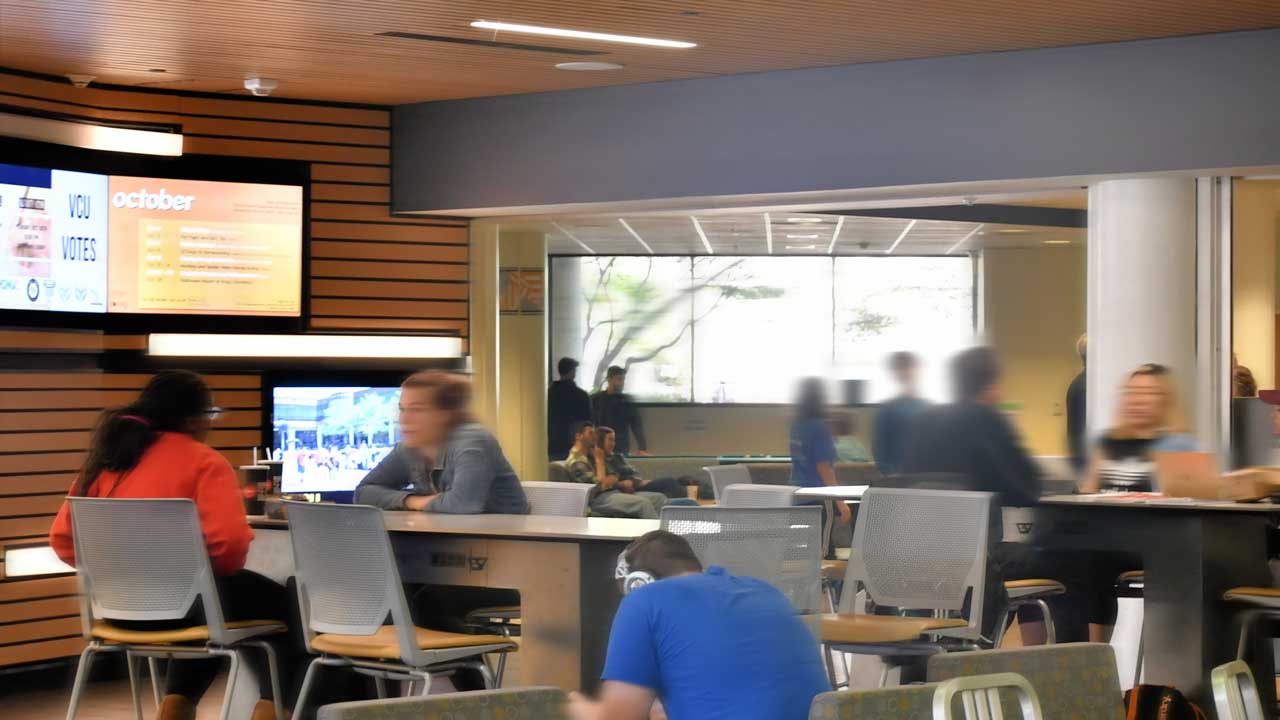Navigating Educational Communication: The Navori Advantage

Efficiently meeting the real-time information needs of schools and their students – Transforming challenges into opportunities for seamless campus communications
Identify the needs and pitfalls
The education industry needs fast and widespread communication. Navori software steps up to the plate, offering a flexible platform for instant updates, event schedules, and interactive engagement.
Old-fashioned methods, like notice boards and slow announcements, can cause communication problems. Navori’s digital signage software solves these issues by creating a dynamic and responsive way to share information smoothly.
How Can Digital Signage Transform Your Educational Landscape?
Reducing Paper Waste and Printing Costs
Let’s be eco-friendly and save money by using less paper and printing. Navori software helps schools communicate efficiently without harming the environment.
Keeping Students Organized and Well-Informed
Digital signs become a hub of information, making sure students know about schedules, events, and important news. This keeps everyone on top of things and engaged.
Improving the Visual Appeal of Your Campus
Create an aesthetically pleasing campus environment with vibrant and visually appealing digital displays. Navori powered digital signage screens enhance the overall ambiance, leaving a lasting impression on students and visitors alike.
Easy Synchronization of Class Schedules and Updates
It’s a breeze to keep class schedules and updates in sync across different places. Navori software makes sure everyone is on the same page, reducing confusion and making things run smoothly.
Supporting All Player and Screen Types
Navori’s flexible digital sign solutions work with many different types of players and screens, making it a perfect fit for schools with unique needs.
Puttings up digital signage screens in our hallways and common areas not only makes the school look more modern and inviting, but the students seem to regularly be checking them for the latest schedules and announcements, which is great!
— Clarissa Morgan, School Administrator
Real-life Use Cases
Integrate with Internal Systems to Sync Class Schedules in Real-Time
Navori software seamlessly integrates with internal systems, enabling real-time synchronization of class schedules. This ensures accurate and up-to-date information for students and faculty.
Power Cafeteria Menu Boards and Library Signage
Revamp cafeteria and library communication with vibrant digital menu boards and signage. Navori’s solutions provide a dynamic platform for sharing menu updates and library information.
Easily Display Test Results and Scores
Facilitate transparent communication of student performance by easily displaying test results and scores. Navori software promotes a culture of academic accountability.
Interactive Wayfinders to Help Students Find Their Way
Enhance campus navigation with interactive wayfinders. Navori digital signage software aids students in finding their way around the campus effortlessly.
Emergency Alerts and Evacuation Notices
Ensure the safety of students and staff by using Navori software for instant dissemination of emergency alerts and evacuation notices, helping to streamline crisis management.

In Conclusion
In summary, Navori software can completely change how communication works in education. It’s all about meeting specific needs and avoiding common problems. When schools use digital displays, they can create a more connected and informative campus that looks great, making the educational experience better for everyone.
 Copy link
Copy link